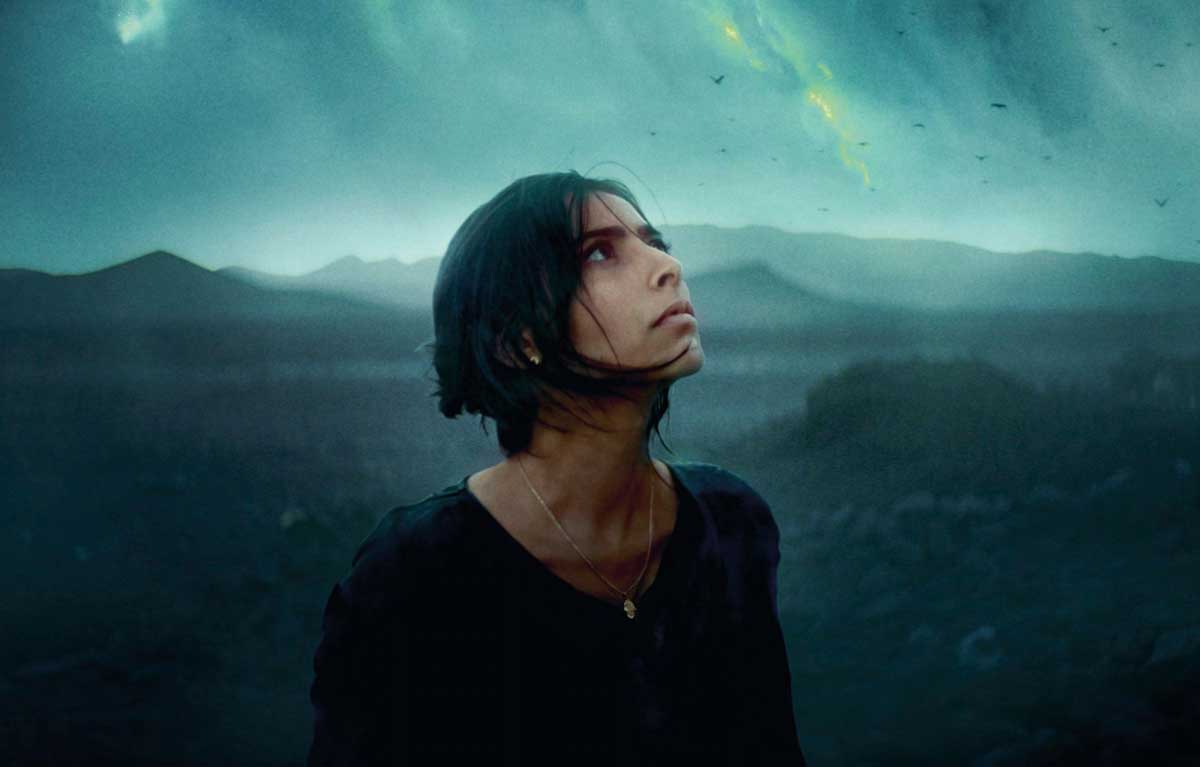Aliens land in Morocco

Following the success of her short – "It doesn't matter if the animals die" (Qu'importe si les bêtes meurent) – which was awarded the Grand Jury Prize at the 2020 Sundance Festival, Sofia Alaoui has now released her first feature film. "Animalia" builds on the short and adds an additional narrative strand, in which different worlds overlap, to examine how the boundaries between the animal and the human become blurred.
Alaoui's work is part of a new, experimental trend in Maghrebi cinema, driven primarily by Tunisian and Moroccan filmmakers keen to explore genres such as science fiction, fantasy, disaster films, superheroes, action and music films, all of which have scarcely played a role in Arab cinema to date. Hybrid forms are also emerging, meaning there is still a place for the traditional political and social themes of Arab-Maghreb cinema.
The opening scene of "Animalia" follows the camera through the interior of a luxurious mansion. At the centre of a lavishly decorated rococo-style hall, we see a huge chandelier against a backdrop of Moroccan mosaics and texts from the Koran. This incoherent mixture not only reflects the taste of a section of urban Moroccan upper-class but is also emblematic of the film's style, which blends different techniques and effects, while using geographically distant styles.
A poetic fairytale
The protagonist "Ito" comes from a simple rural background and makes every effort to fit in with her husband's wealthy family. But a brief glimpse of their class differences is swiftly overtaken by a catastrophe, the cause of which remains obscure. Ito, who is heavily pregnant, suddenly finds herself alone in the sprawling villa. The journey to her husband and his family takes her through the remote hinterland and desert regions of Morocco. Ito bears a double burden of loneliness, convinced she belongs neither to her husband's wealthy family nor to this world of extreme poverty.
Alaoui combines apocalyptic cinema with arthouse. The nature of the catastrophe is not revealed, we only see the effects: Clouds of dust and fog, wandering herds of animals, hastily departing troop carriers, birds attacking people and religious institutions calling for prayers to avert the disaster.
A tide of rising panic brings repressed fears to the surface: dread from the time of the Moroccan military coups, the pandemic era with its fear of nature spiralling out of control, fear of an alien invasion, of demons, of the poor... In short: fears of the unknown and the other in general. Wealth and the prevailing religion fade in the face of catastrophe. At the same time, Ito's situation appears precarious in several respects, especially when she sets off alone as a woman to places characterised by harsh masculinity and the religious customs and ceremonies imposed on her.
Alaoui's film – a blend of different aesthetic styles – is equally at home with Morocco's three languages Arabic, French and Amazigh. The result is a nuanced portrayal of the culture, classes and ethnicities of Moroccan society, which at the same time points out ways of overcoming and penetrating these differences.

Casting Moroccan scenery in a new light
Towards the middle of the film "Animalia" becomes a road movie, as Ito sets off on a journey through the Moroccan Sahara with new companions. There are mystical references and mysterious, abstract dialogues in which spiritual enlightenment turns into hallucination. The climax is reached when they approach Satan and dare to look him in the face – a powerful, supernatural phenomenon that is both frightening and fascinating.
Moroccan terrain has long been a favourite backdrop for American film productions. In "Animalia", the director Sofia Alaoui highlights Morocco's scenery from a local and personal perspective, focusing in particular on the Atlas Mountains. Referencing ongoing attempts to introduce science fiction to the Maghreb, Alaoui explained that her aim in bringing Moroccan nature to the screen was to draw on its magical and exotic effect, to prove that aliens have also landed in Morocco. No doubt she has broadened our field of vision: Hollywood is not the only place aliens land.
Shady Lewis Botros
© Qantara.de 2023
